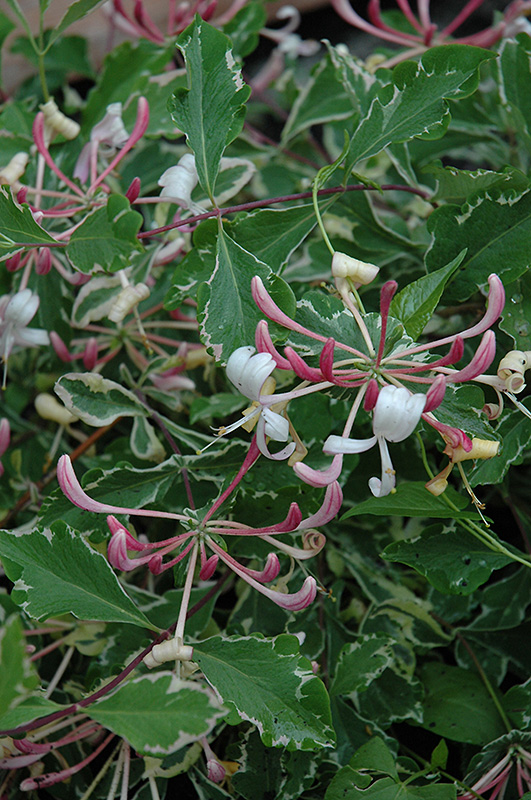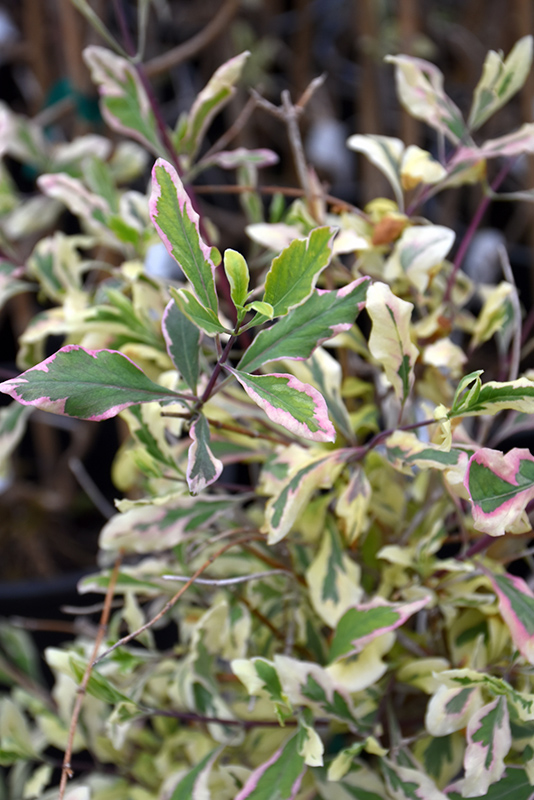Harlequin Honeysuckle
Lonicera periclymenum 'Harlequin'
Height: 20 feet
Spread: 24 inches
Sunlight:
![]()
![]()
Hardiness Zone: 4a
Other Names: Woodbine Honeysuckle
Description:
A superb variety of our native climber with artistically variegated rich green and white foliage all season long to go with the incredibly fragrant flowers that bloom over a long period; let it climb over an arbor where its scent can be enjoyed
Ornamental Features
Harlequin Honeysuckle features showy clusters of fragrant white trumpet-shaped flowers with shell pink overtones and yellow throats at the ends of the branches from late spring to mid summer, which emerge from distinctive rose flower buds. It has attractive white-variegated green foliage with hints of pink. The pointy leaves are highly ornamental but do not develop any appreciable fall colour.
Landscape Attributes
Harlequin Honeysuckle is a multi-stemmed deciduous woody vine with a twining and trailing habit of growth. Its average texture blends into the landscape, but can be balanced by one or two finer or coarser trees or shrubs for an effective composition.
This woody vine will require occasional maintenance and upkeep, and is best pruned in late winter once the threat of extreme cold has passed. It is a good choice for attracting butterflies and hummingbirds to your yard. It has no significant negative characteristics.
Harlequin Honeysuckle is recommended for the following landscape applications;
- Mass Planting
- Hedges/Screening
- General Garden Use
- Groundcover
Planting & Growing
Harlequin Honeysuckle will grow to be about 20 feet tall at maturity, with a spread of 24 inches. As a climbing vine, it tends to be leggy near the base and should be underplanted with low-growing facer plants. It should be planted near a fence, trellis or other landscape structure where it can be trained to grow upwards on it, or allowed to trail off a retaining wall or slope. It grows at a fast rate, and under ideal conditions can be expected to live for approximately 20 years.
This woody vine does best in full sun to partial shade. It does best in average to evenly moist conditions, but will not tolerate standing water. It is not particular as to soil type or pH. It is somewhat tolerant of urban pollution. Consider applying a thick mulch around the root zone in winter to protect it in exposed locations or colder microclimates. This is a selection of a native North American species.



